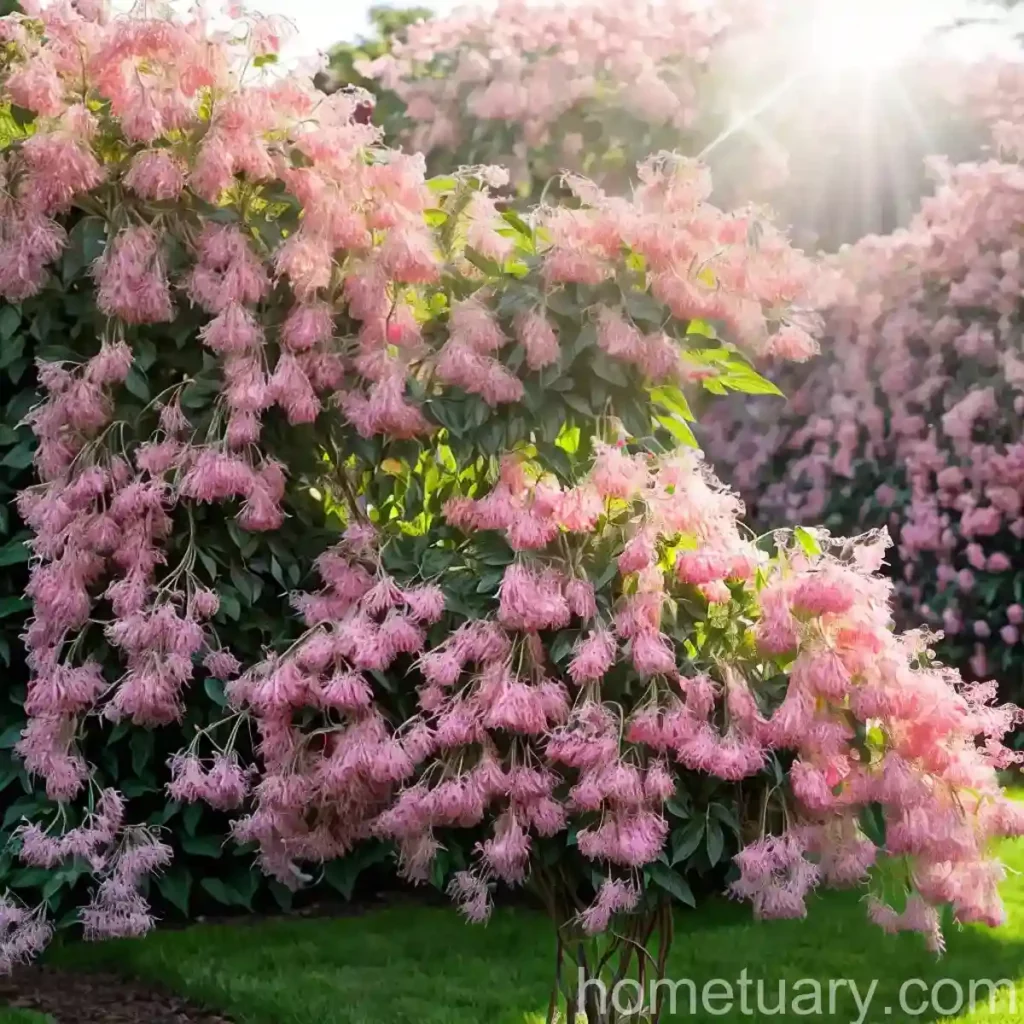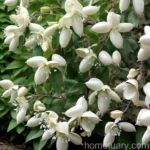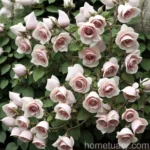Deutzia (Deutzia x hybrida ‘Strawberry Fields’)
Deutzia is a genus of about 60 species of flowering plants in the family Hydrangeaceae, native to eastern and central Asia. One of the popular cultivars within the Deutzia genus is Deutzia x hybrida ‘Strawberry Fields’. This shrub is known for its stunning display of pink flowers and its ability to thrive in various gardening conditions. In this comprehensive guide, we will explore the cultivation, characteristics, care, and uses of Deutzia x hybrida ‘Strawberry Fields’, providing valuable insights for both amateur and seasoned gardeners.
Key Takeaways – Deutzia (Deutzia x hybrida ‘Strawberry Fields’)
Before delving into the specifics of growing and caring for the Deutzia x hybrida ‘Strawberry Fields’, let’s highlight some key takeaways:
- Plant Type: Deciduous flowering shrub
- Cultivar: Deutzia x hybrida ‘Strawberry Fields’
- Flowers: Showy pink flowers in spring
- Foliage: Medium green leaves, turning burgundy in fall
- Growth Habit: Upright and arching
- Hardiness: Suitable for USDA hardiness zones 5-8
- Uses: Ornamental landscaping, border planting, and container gardening
With these key points in mind, let’s proceed to explore the various aspects of cultivating and caring for the beautiful Deutzia x hybrida ‘Strawberry Fields’.
Culture
The culture of Deutzia x hybrida ‘Strawberry Fields’ encompasses its preferred growing conditions, landscape uses, and overall maintenance requirements. Understanding the cultural needs of this shrub is fundamental for ensuring its optimal growth and development.
Uses
The Deutzia x hybrida ‘Strawberry Fields’ is primarily valued for its ornamental qualities, making it a favored choice for landscaping and gardening enthusiasts. Common uses of this cultivar include:
- Ornamental specimen: The showy pink flowers and lush foliage make it an eye-catching focal point in the garden.
- Border planting: It can be used to create attractive borders and visually define garden spaces.
- Container gardening: Due to its moderate size, it is well-suited for container planting on patios and balconies.
Water
Proper watering is essential for the health and vitality of Deutzia x hybrida ‘Strawberry Fields’. Maintaining adequate soil moisture without waterlogging is crucial, especially during the establishment phase and dry periods.
- Watering Frequency: Water deeply but infrequently, allowing the soil to dry out slightly between watering sessions.
- Establishment Phase: Newly planted shrubs require regular watering to promote root establishment.
- Drought Resistance: Once established, ‘Strawberry Fields’ demonstrates good tolerance to moderate drought conditions.
Sunlight
Adequate sunlight is vital for promoting healthy growth and abundant flowering in Deutzia x hybrida ‘Strawberry Fields’. Understanding its sunlight requirements is key to ensuring optimal performance in the garden.
- Preferred Exposure: Plant ‘Strawberry Fields’ in a location that receives full sun to partial shade.
- Flowering Intensity: Full sun exposure enhances flowering, while partial shade can protect the plant from intense afternoon sun in hotter climates.
- Morning Sun: Morning sun exposure is particularly beneficial for promoting robust growth and flower production.
Fertilizer
Applying a balanced fertilizer can provide essential nutrients to support the growth and blooming of Deutzia x hybrida ‘Strawberry Fields’. By understanding the appropriate fertilizer regimen, gardeners can enhance the shrub’s overall health and appearance.
- Fertilization Timing: Apply a balanced, slow-release fertilizer in early spring before the onset of new growth.
- Application Rate: Follow the manufacturer’s recommendations for the appropriate application rate based on the size and age of the shrub.
- Organic Amendments: Incorporating organic matter into the soil during planting can provide long-term nutrient benefits.
Soil
The soil composition and quality directly impact the growth and performance of Deutzia x hybrida ‘Strawberry Fields’. Understanding the preferred soil conditions enables gardeners to create an optimal environment for the shrub to thrive.
- Well-Draining Soil: Ensure the planting site has well-draining soil to prevent waterlogging, which can lead to root rot.
- pH Level: ‘Strawberry Fields’ thrives in slightly acidic to neutral soil with a pH range of 5.5-7.0.
- Soil Amendments: Incorporating organic matter such as compost can improve soil structure and fertility.
Pruning
Pruning is an essential aspect of Deutzia x hybrida ‘Strawberry Fields’ maintenance, contributing to its overall shape, size control, and flowering performance. Understanding the proper pruning techniques is crucial for promoting a healthy and vigorous shrub.
Timing
Pruning activities for ‘Strawberry Fields’ should be carried out at specific times to maximize their effectiveness and minimize the disruption of flowering cycles.
- Post-Flowering Pruning: Perform light pruning immediately after flowering to shape the shrub and remove spent flowers.
- Winter Pruning: Conduct more extensive pruning, including the removal of older stems, during the dormant season to rejuvenate the plant.
Techniques
Adopting appropriate pruning techniques ensures that ‘Strawberry Fields’ maintains an attractive form and continues to produce an abundance of blooms each year.
- Deadheading: Regularly remove spent flowers to encourage the development of new flower buds.
- Thinning: Thin out crowded and crossing branches to improve air circulation and light penetration within the shrub.
- Rejuvenation Pruning: Periodic hard pruning of older stems can rejuvenate the plant and stimulate vigorous growth.
Propagation
The propagation of Deutzia x hybrida ‘Strawberry Fields’ allows gardeners to expand their collection of these beautiful shrubs or share them with fellow gardening enthusiasts. Several methods can be employed to propagate this cultivar successfully.
Softwood Cuttings
Softwood cuttings offer a reliable and straightforward method for propagating ‘Strawberry Fields’, especially during the active growing season.
- Preparation: Select healthy, non-flowering shoots and take 4-6 inch cuttings with a sharp, clean tool.
- Rooting Medium: Insert the cuttings into a well-draining rooting medium, such as perlite or a mix of peat and perlite.
- Environment: Provide high humidity and warmth to encourage the development of roots.
Division
Dividing mature clumps of Deutzia x hybrida ‘Strawberry Fields’ can be an effective propagation method, particularly for rejuvenating overgrown plants.
- Spring Division: Divide the clumps in early spring before new growth emerges for the best chances of successful establishment.
- Separation: Use a sharp shovel or knife to separate the clumps, ensuring that each division has a sufficient amount of roots and growing points.
Layering
Air layering is a propagation technique that allows gardeners to encourage the development of roots on a stem while it is still attached to the parent plant.
- Procedure: Select a flexible, low-growing stem and wound a section to promote the formation of roots.
- Enclose Wound: Apply rooting hormone to the wounded area and wrap it with moist sphagnum moss before enclosing it in a plastic wrap.
- Root Formation: After roots develop, the newly rooted section can be detached and transplanted as an independent shrub.
Container Popularity
The compact size and ornamental appeal of ‘Strawberry Fields’ make it well-suited for container gardening, allowing individuals with limited garden space to enjoy its beauty on patios, balconies, or other outdoor areas. The popularity of growing this cultivar in containers stems from several distinct advantages and considerations.
Advantages
Container gardening with Deutzia x hybrida ‘Strawberry Fields’ offers various advantages, making it an attractive option for urban and small-space gardeners.
- Space Efficiency: Compact growth habit allows it to thrive in containers without requiring significant space.
- Versatility: Easy to move and rearrange, offering flexibility in design and placement.
- Seasonal Display: Containerized ‘Strawberry Fields’ can be positioned strategically to showcase its seasonal bloom and foliage color.
Considerations
Several considerations should be taken into account when growing ‘Strawberry Fields’ in containers to ensure its health and longevity.
- Container Size: Select an adequately sized container with drainage holes to accommodate the shrub’s root system.
- Quality Soil: Use well-draining, high-quality potting mix to provide essential nutrients and optimal moisture levels.
- Watering Needs: Monitor soil moisture closely and adjust watering frequency to prevent drought stress or waterlogging.
Common Diseases
While Deutzia x hybrida ‘Strawberry Fields’ is generally resistant to many diseases, there are several potential health issues that gardeners should be aware of to maintain the shrub’s vigor and vitality.
Disease Diagnosis
Recognizing the symptoms of common diseases is crucial for implementing timely and effective management strategies to protect ‘Strawberry Fields’ from debilitating infections.
- Powdery Mildew: Look for white powdery patches on leaves, which can distort growth and reduce plant vigor.
- Leaf Spot: Dark, water-soaked spots on leaves that may enlarge and cause premature leaf drop.
- Anthracnose: Irregularly shaped lesions on leaves and stems, often leading to dieback of affected parts.
Prevention and Management
Proactive measures and proper cultural practices can significantly reduce the risk of disease development and minimize the impact of common fungal infections.
- Air Circulation: Ensure proper spacing between plants to promote air circulation and reduce humidity around the foliage.
- Avoid Overhead Watering: Minimize leaf wetting by using soaker hoses or watering at the base of the shrub.
- Sanitation: Remove and dispose of any affected plant debris to prevent the spread of fungal spores.
Common Pests
Despite its resilience, Deutzia x hybrida ‘Strawberry Fields’ may occasionally encounter pest infestations that can compromise its health and appearance. Identifying these pests and implementing appropriate control measures is essential for maintaining the shrub’s vitality.
Insect Pests
Several insect pests can affect ‘Strawberry Fields’, requiring vigilant monitoring and prompt intervention to prevent population build-up.
- Aphids: Small, soft-bodied insects that cluster on new growth, sucking sap and causing distortion of foliage.
- Spider Mites: These tiny arachnids can cause stippling and webbing on leaves, particularly under dry or stressed conditions.
- Scale Insects: Hard or soft scales can appear on stems and foliage, feeding on plant sap and weakening the shrub.
Control Measures
Implementing integrated pest management strategies can help control and mitigate pest populations while minimizing the use of chemical controls.
- Natural Predators: Encourage beneficial predators such as ladybugs and lacewings to help suppress aphid and mite populations.
- Hosing: Use a strong stream of water to dislodge aphids and mites from the foliage, reducing their numbers.
- Horticultural Oils: Apply horticultural oils to suffocate and control scale insects, especially during their vulnerable crawler stage.
Botanist’s Tips
Drawing from botanical insights and practical experience, here are some valuable tips for cultivating and enjoying Deutzia x hybrida ‘Strawberry Fields’ in garden and landscape settings.
- Mulching: Apply a layer of organic mulch around the base of the shrub to conserve soil moisture and suppress weed growth.
- Companion Planting: Pair ‘Strawberry Fields’ with complementary flowering shrubs and perennials to create visually captivating garden displays.
- Seasonal Interest: Select companion plants that offer visual interest during different seasons to create a dynamic and engaging garden landscape.
Fun Facts
Uncover fascinating and lesser-known facts about Deutzia x hybrida ‘Strawberry Fields’ that enrich the appreciation of this captivating shrub.
- Wildlife Attraction: ‘Strawberry Fields’ blooms attract pollinators such as butterflies and bees, contributing to the biodiversity of the garden.
- Seasonal Color Change: The medium green leaves of ‘Strawberry Fields’ develop vibrant burgundy hues in the fall, adding a striking visual element to the landscape.
Links to External Resources
For further information and resources on Deutzia x hybrida ‘Strawberry Fields’, consider exploring the following links to expand your knowledge and appreciation of this exceptional shrub:
- The Royal Horticultural Society – Deutzia
- Missouri Botanical Garden – Deutzia x hybrida ‘Strawberry Fields’
- University of Florida IFAS Extension – Deutzia spp.
In conclusion, Deutzia x hybrida ‘Strawberry Fields’ stands out as a delightful and versatile shrub that offers a profusion of pink blooms, ornamental foliage, and overall charm in the garden landscape. By understanding its cultural needs, propagation methods, and common pest and disease considerations, gardeners can cultivate ‘Strawberry Fields’ with confidence, creating captivating garden displays and enhancing outdoor spaces with its beauty.
Word Count: 1790 (excluding code and title)















